 Since the square of a binomial is equal to the square of the first term, plus twice the product of the first term by the second, plus the square of the second... Since the square of a binomial is equal to the square of the first term, plus twice the product of the first term by the second, plus the square of the second...  Elementary Algebra - Page 197by Charles Davies - 1867 - 303 pagesFull view Elementary Algebra - Page 197by Charles Davies - 1867 - 303 pagesFull view - About this book
 | Charles Davies - Algebra - 1861 - 322 pages
...the manner in which the value of the unknown quantity may be found. We have seen (Art. 38), that and comparing this square with the first and third forms....product of the 2d term by the first. If, then, we take half the co-efficient of x, viz : p, and square it, and add the result in each equation, to both... | |
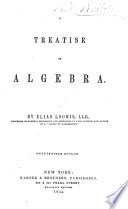 | Elias Loomis - Algebra - 1864 - 386 pages
...the square root. Now we know that the square of a binomial, x-{- a, or x'+ 2aa;+a', is composed of the square of the first term, plus twice the product of the first term by the second, plus the square of the second term. Hence, considering x'+px as the first... | |
 | Horatio Nelson Robinson - Algebra - 1866 - 328 pages
...square а -f 6, we shall have (a + 6)2 = a2 + 2ab + V. This result, expressed in words, is as follows : The square of the first term, plus twice the product of the two terms, plus the square of the second term.The last two terms of the power may be factored as follows... | |
 | Joseph Ray - Algebra - 1852 - 422 pages
...member of this equation may always be made a perfect square. Since the square of a binomial is equal to the square of the first term, plus twice the product of the first term by the second, plus the square of the second ; if we consider x^-\-2px as the first two... | |
 | Joseph Ray - Algebra - 1866 - 252 pages
...first member of this equation may always be made a perfect square. The square of a binomial is equal to the square of the first term, plus twice the product of the first term by the second, plus the square of the second. If, now, we consider x--\-2px as the first... | |
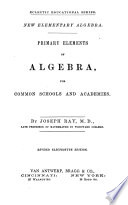 | Joseph Ray - Algebra - 1866 - 250 pages
...first member of this equation may always be made a perfect square. The square of a binomial is equal to the square of the first term, plus twice the product of the first term by the second, plus the square of the second. If, now, we consider x^-\-2px as the first... | |
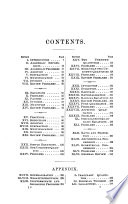 | Daniel Barnard Hagar - Algebra - 1873 - 278 pages
...together with twice the product of every pair of terms; or, 2. The square of any polynomial consists of the square of the first term, plus twice the product of the first term into the second, plus the square of the second, plus twice the sum of the first two terms... | |
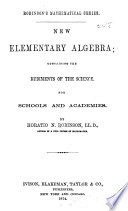 | Horatio Nelson Robinson - Algebra - 1874 - 340 pages
...square a + b, we shall have (a + b)' = a2 + 2ab + b'. This result, expressed in words, is as follows : The square of the first term, plus twice the product of the two terms, plus the square of the second term. The last two terms of the power may be factored as follows:... | |
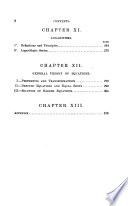 | William Guy Peck - Algebra - 1875 - 348 pages
...the sum of all the other terms. Hence, its square, which is the given polynomial, will be made up of the square of the first term, plus twice the product of the first term by the sum of all the other terms, plus the square of the sum of all the other term*, (Art.... | |
 | Lorenzo Fairbanks - 1875 - 472 pages
...combinations produced. 616. A Binomial is a quantity consisting of two terms, and its square is equal to the square of the first term, plus twice the product of the first by the second, plus the square of the second. Let 35 be written 30 + 5. Then, squaring this number,... | |
| |